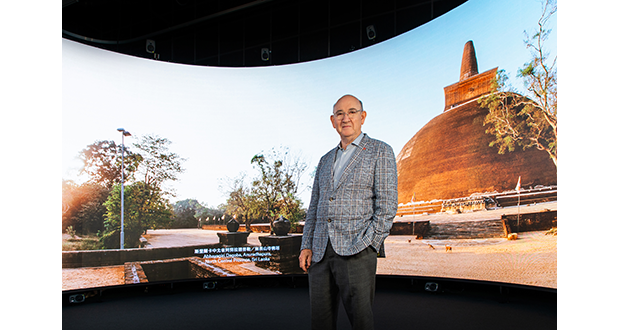A new Visualisation Research Centre has been set up with what is said to be a world-first 360° LED visualisation cinema and a 180° iDome Cinema.
The centre has been established at Hong Kong Baptist University (HKBU) as part of a two-year project, Future Cinema Systems: Next-Generation Art Technologies.
The 8m wide by 4m tall 360° cinema consists of over 400 LED panels, creating a 26m pixel canvas. The LED panels are complemented by a 32.4 channel surround sound system to complete the sense of immersion.
The Future Cinema Systems project has been awarded HK$35.4m ($4.5m) in funding and brings researchers at HKBU together with colleagues at City University of Hong Kong (CityU) and the École Polytechnique Fédérale de Lausanne (EPFL) in Switzerland.
Together, they will create an integrated system that offers a new kind of platform for people working in theatre, dance, music and sports and that will transform multimedia archives into “post-cinematic encounters that people can explore and experience”.
Professor Jeffrey Shaw, chair professor of the Academy of Visual Arts at HKBU, who leads the project. commented: “We are developing technologies that will enhance interactivity between individuals and groups of people. In our cinematic environment, up to 30 visitors can interact with the imagery and with each other,” says Professor Shaw.
The new cinema will challenge the conventionally passive role of audiences. “We are developing technologies that will enhance interactivity between individuals and groups of people. In our cinematic environment, up to 30 visitors can interact with the imagery and with each other.”
Using wearable sensors and biometric devices, the platform can track viewers’ physical position, behavior, gesture, facial expression, body temperature and heart rate to understand what they are looking at, how they are behaving with respect to other viewers, and how they are responding to the content being presented to them.
A co-evolutionary narrative engine, incorporating artificial intelligence (AI) and machine learning, will enable the audiovisual content to react and respond to the sensory prompts provided by the participants.
The iDome Cinema at the new visualisation comprises a laser DLP projector, a vertical hemispherical screen that is 4m in diameter and surround sound audio. Ideally suited for museum exhibition, the iDome Cinema uses a fisheye lens to project spherical photos and videos that can be rotated interactively.
The first fruits of the new facility will be deployed at venues in Hong Kong, such as the international airport, M+ museum and Tai Kwun.
 AV Magazine AV Magazine
AV Magazine AV Magazine 






Have your say
or a new account to join the discussion.